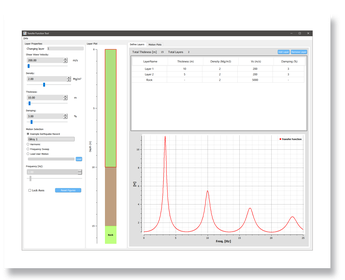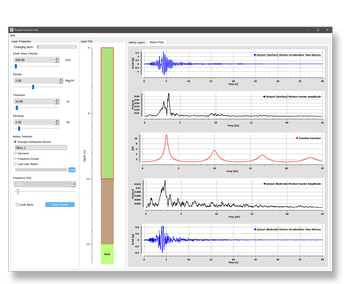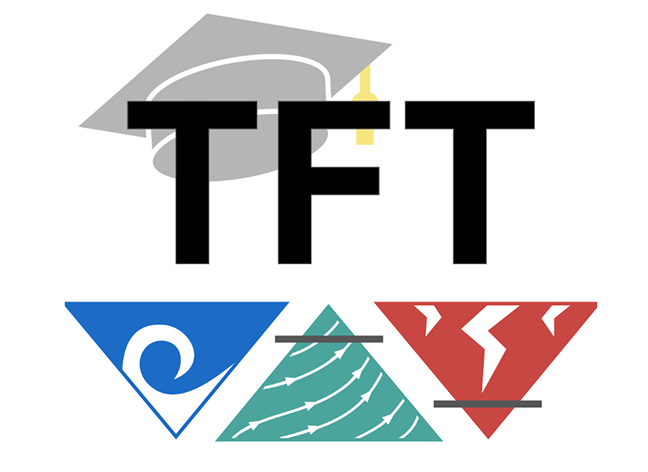TFT focuses on the application of the transfer function principle to one dimensional layered soil profiles, to calculate the output (surface) motion induced by a given input (bedrock) motion.
This tool allows users to define layered soil profiles underlain by rigid/elastic rock and change the characteristics of each layer, including thickness, shear wave velocity, density, and damping ratio of each layer. The user can also choose from various predefined input (rock) motions or supply specific motions. By changing the soil profile and input motion, the user can examine how each frequency in the input motion is amplified, or de-amplified by the soil deposit. Users can then develop a clear understanding of the effect of soil properties on wave propagation through layered media and its application to site response analysis.
TFT anticipates users have a basic knowledge of wave propagation and Fourier analysis. TFT introduces key concepts to begin understanding site response analysis in layered media and prepares users for more advanced site response tools such as S3hark.


TFT user interface with Defining Layers tab shown
TFT user interface with Motion Plots tab shown
Video Tutorial
How to cite:
Long Chen, Pedro Arduino, Peter Mackenzie-Helnwein, & Frank McKenna. (2020, September 30). NHERI-SimCenter/TransferFunctionTool: Version 1.0.0 (Version v1.0.0). Zenodo. http://doi.org/10.5281/zenodo.4060370
Deierlein, G.G., McKenna, F., et al. (2020). A Cloud-Enabled Application Framework for Simulating Regional-Scale Impacts of Natural Hazards on the Built Environment. Frontiers in Built Environment. 6, 196. doi: 10.3389/fbuil.2020.558706.
